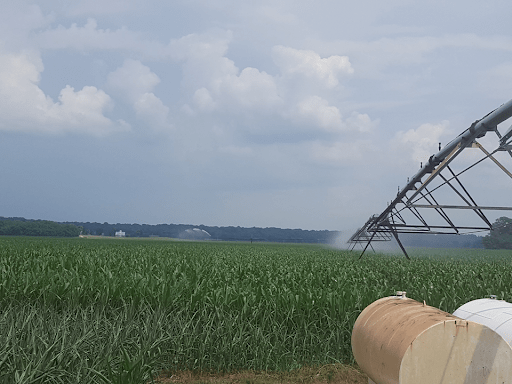Bit of a pitch here from a cool organization, been on their list for some time, wiffle-waffling…
Improve soil water & carbon retention!
Improve the human gut microbiome!
Getchyer used microscope & sign up for a soil microbiome certificate class!
Farmers Face Many Barriers to Adopting Regenerative Practices
Heather B., Soil Food Web School
If you’re familiar with Dr. Elaine Ingham’s work and the focus of the Soil Food Web School, then you already know how much farmers can benefit from focusing on soil biology and adopting other Regenerative Agriculture practices. These benefits include increased profits, decreased expenses on chemical inputs, improved resiliency in the face of extreme weather events, and even increased independence from government oversight.*
If it’s so Great, why isn’t Regenerative Agriculture Everywhere?
Given how much Regenerative Ag methods have to offer, why aren’t all farmers transitioning NOW?
Dr. Tim LaSalle of the Center for Regenerative Agriculture and Resilient Systems outlined many of the challenges farmers face in a recent trip to Washington DC with Soil Food Web School founder, Dr. Elaine Ingham, Executive Director of The Institute for Responsible Technology, Mr. Jeffrey Smith, and SFW Mentor, Dr. Adrienne Godschalx. In this post, we include and expand on the issues Dr. LaSalle outlined. Generally speaking, changing a farmer’s worldview and practices from a chemical-based approach to a holistic approach is a huge challenge. Specifically, some of the key barriers are:
- Tradition: it’s hard to walk away from a history of practices handed down generationally.
- Lack of clarity: as a recent study shows, there is no consistency in how the term “Regenerative Agriculture” is used. Farmers often aren’t sure what exactly it means.
- Lack of expert guidance: farmers have long-standing relationships with agricultural consultants who are trained in the old model that relies on chemical inputs.
- Financial risk: farmers have families to feed and bills to pay–they fear a reduction in income while they transition, and government programs seldom provide support.
- Equipment: farmers have huge investments in their current equipment, and they might not realize most equipment can be adapted for new practices.
- Peer pressure: neighboring farmers often deride farmers who try new things.
- Pride: it’s hard to admit that their current methods might be flawed.
How to Remove Barriers for Farmers

Photo by Todd Harrington at York Farms, Illinois – 3500 acre non-GMO corn being irrigated and injected with activated compost tea at approximately 10-15 gallons per acre.
So, what needs to change to make this transition easier for farmers?
- Farmer networking: farmers who are successful in implementing Regenerative Ag practices need to share their successes more widely–especially with other farmers. Farmers need to be reassured that there can be low risks and high benefits.
- Define “Regenerative Agriculture:” communicators, educators, and advocates need to be clear about what they mean. A lack of specificity can create real-world obstacles to public awareness and supportive policy.
- Government Policy and Funding: for example, government-backed loans should be available for equipment tailored to Regenerative Agriculture, such as compost turners and specialized application equipment. Additionally, government-backed crop loss insurance should also be available for farmers.
- University Funding: there needs to be more funding for Regenerative Agriculture research and programs so that the pipeline of experts is refreshed and expanded.
- Research Acknowledgement: academics must receive recognition for publishing research that reflects holistic thinking in agriculture and related sciences instead of the chemical paradigm.
- Consultant Training: a new generation of Regenerative Ag consultants needs to be trained so farmers have the expert support they need.
No big deal, right? We’re working at the Soil Food Web School to help facilitate some of the changes that need to happen. In addition to training farmers and future consultants about the Soil Food Web Approach and other Regenerative Agriculture practices, we present free educational webinars, and our staff is working with other advocates to educate and influence our government leaders. See below for some ways you can get involved!
What can You Do to Help?
- Buy products from farmers/growers that practice Regenerative Ag whenever possible.
- Ask your local farmers/growers about their practices and, if they don’t already, encourage them to learn about Regenerative Ag.
- Call your elected representatives and let them know you want them to support policy in favor of Regenerative Agriculture.
- If you’re an alumni of a college or university, let them know Regenerative Ag (as well as teaching related sciences such as plant physiology and geology from a more holistic perspective) is important to you. If there is an existing Regenerative Ag program, support it. If there isn’t, let the institution know you’d like to see one.
- If you are a farmer and aren’t yet convinced, learn more about soil biology and Regenerative Ag and how it can benefit your operation.
- If you are a farmer currently using Regenerative Ag practices, share your experience with other farmers.
- If you are a non-farmer/grower and want to help, there are many ways you can educate yourself to make their transition to Regenerative Ag easier. One of those ways is to become a Soil Food Web consultant.
*How can adopting Regenerative Ag practices free me from government oversight? Here’s one example: if you’re not using synthetic pesticides, you don’t have to worry about regulations regarding pesticide drift or runoff.
©2021 Soil Foodweb School LLC. All Rights Reserved.
https://www.soilfoodweb.com/barriers-to-regenerative-agriculture





